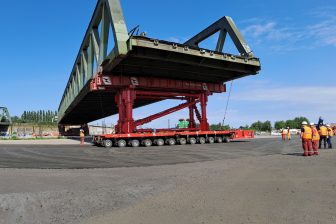Road traffic in Great Britain Q1 2006
London, United Kingdom – The Department for Transport has 2006-05-11 published National Statistics on Traffic in Great Britain, including analyses by vehicle type and road class, for the first quarter of 2006.
These provisional figures indicate that estimated traffic levels rose by 1.2 per cent between Q1 2005 and Q1 2006. Other key results, comparing Q1 2005 and Q1 2006, include:
- Car traffic was virtually unchanged
- Light van traffic was 8 per cent higher
- Goods vehicle traffic rose by 3 per cent
- Other motor vehicle traffic was virtually unchanged
- Traffic on motorways rose by 1 per cent, and by 2 per cent on Rural A roads and Minor Urban roads
- Traffic on Urban A roads and on Minor Rural roads was virtually unchanged
- 1. The figures relate to traffic, measured in terms of vehicle kilometres, and sometimes known as the volume of traffic. This is not the same as congestion. For example, traffic levels might show an increase but at the same time congestion levels may decline. This could happen if, for example, there is more traffic overall but it is more evenly spread during the day, with less during peak periods and more at other times. Congestion has a number of consequences, such as causing delays and making journey times unreliable. The Government announced on 5 July 2005 two new targets for congestion. The first is to, by 2007-08, make journeys more reliable on the strategic road network. The target will be achieved if the average vehicle delay on the 10% worst journeys across the strategic road network is less in 2007-08 than in the baseline period August 2004 to July 2005. The baseline for the target, published on 14 February 2006, is an average vehicle delay of 3.5 minutes per ten vehicle miles travelled for the worst 10% of journeys. Nine times out of ten journeys were quicker than this. The second target is that, by 2010-11, the ten largest urban areas will meet the congestion targets set in their Local Transport Plan relating to movement on main roads into city centres.
- 2. Statistics Bulletin Traffic in Great Britain – 1st Quarter 2006 is available at the following address: www.dft.gov.uk/transtat/roadtraff
- 3. At this stage, the quarterly estimates are based mainly on data at 152 sites, and are subject to revision. Final results for 2005 will be published in July 2006. Caution should be taken in drawing conclusions about longer term trends from a single quarter’s or year’s estimates.
- 4. The next quarterly bulletin will be published on Thursday 10 August 2006.
U las zojuist één van de gratis premium artikelen
Onbeperkt lezen? Profiteer nu van de introductieaanbieding voor € 10,- per maand.
Bent u al abonnee?




